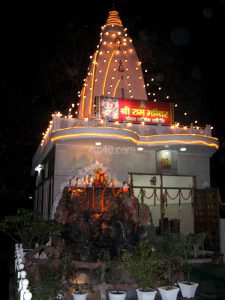 Devotees perform elaborate pujas and chant the name of Rama for whole day. Temples of Rama are specially decorated and satsangs and bhajan sessions are organized in most of the temples, through the day. Discourse on the Ramayana, are recited by a pundit or a professional story-teller on this day. At some places of India, it usually lasts nine days, beginning on Ugadi and ending on Rama Navami. A skilled story-teller who can liven up the event by weaving in contemporary events attracts massive crowds. Thus, people of India celebrate Ram Navami with great joy and devotion.
Devotees perform elaborate pujas and chant the name of Rama for whole day. Temples of Rama are specially decorated and satsangs and bhajan sessions are organized in most of the temples, through the day. Discourse on the Ramayana, are recited by a pundit or a professional story-teller on this day. At some places of India, it usually lasts nine days, beginning on Ugadi and ending on Rama Navami. A skilled story-teller who can liven up the event by weaving in contemporary events attracts massive crowds. Thus, people of India celebrate Ram Navami with great joy and devotion.
Since Rama is also one of the most sung-about deities in Indian classical music and literature, week-long (and sometimes, month-long) musical programs are also organized at some places. Sacred places associated with Rama, like Ayodhya, Ujjain and Rameshwaram, draw thousands of devotees on this festival of Ram Navami. In Rameshwaram, people take a ritual bath in the sea before worshiping at the Ramanathaswamy temple. Many places in North India host fairs in connection with the festival, culminating in spectacular fireworks on Rama Navami.
According to legend, Lord Rama was born at noon and is the epitome of perfection, the Uttama Purusha, fulfilling all his duties towards both family and his people. In the words of Swami Vivekananda, Lord Rama was ‘the ideal son, the ideal husband, the ideal father and above all the ideal king.’ Lord Rama was a personality grew into perfection as he faced the turmoil of life. His life and the life of his wife Sita devi have become the role models for married couples. By adhering to the ideals of Lord Rama and Sita devi, one can get guidance as to the right and wrong of a situation when one is confronted with a dilemma in human relationships. Rama Rajya (the reign of Lord Rama) is the ideal rule of a king or the one in power. Mahatma Gandhi aspired for Rama Rajya as it is synonymous with a period of peace and prosperity.
Rama Navratras, the nine-day worship dedicated to Lord Ram, starts on Chaitra Shukla Prathami and ends on Chaitra Shukla Navami. Hence Rama Navami or Rama Jayanti marks the culmination of Rama Navratri. Rama Navami is a grand event in the Sri Ram Temple in Ayodhya in Uttar Pradesh, Sri Sita Ramachandra Swamy Temple at Bhadrachalam in Andhra Pradesh, and Rameshwaram Temple in Tamil Nadu. Devotees narrate and listen to the legends of Lord Rama chant his name, recite shlokas and mantras associated with him and dance to the tunes of bhajans on the occasion.
Though Rama Navami is celebrated in a grand manner everywhere in the country, the festival at Ayodhya, the birth place of Lord Rama is celebrated with great zeal and enthusiasm. During Rama Navami, people of Ayodhya take out a Rath Yatra (chariot procession) in order to commemorate the existence of the almighty on earth. The Rath Yatra consists of a merrily decorated chariot with four persons dressed up as Lord Rama, Laxman, Sita devi and Hanuman. The chariot is accompanied by thousands of Ram devotees. They move with the procession throughout the city and chant the name of Lord Ram. The effigy of the ten-headed Ravana passes through the town, wearing an unusual crown and exaggerated moustache. But once Ravana reaches the open ground, he is suddenly deserted because the noble Lord Rama has already made his appearance. The effigy of Ravana, filled to bursting with firecrackers, is set alight, and explodes into a thousand bits amid loud cheers from the crowd and shouts of Jai Shri Ram. This ritual is an important part of the Rama Navami celebrations.
Though Rama Navami is a major festival for Vaishnavites, it is widely celebrated by worshipers of Lord Shiva as well. It is considered auspicious to undertake a fast on the day in the name of Lord Rama. Many devotees fast for nine days, from Ugadi to Rama Navami. The objective of the fast is to seek perfection as a human being. One significant element of the celebration is the Ramayana parayana (recitation of Ramayana) and a discourse on the Ramayana. Professional story-tellers enliven the festival by weaving in contemporary anecdots to attract massive crowds. A special prayer is arranged for the midday, when Lord Rama is supposed to have been born. Throughout the day, couplets of Ramayana and Ramacharit Manas are narrated in the temples.
Lord Rama was the first of the four sons of King Dasharatha of Ayodhya. When it was time for Lord Rama to be made crown prince, his stepmother, Kaikeyi, got Dasharatha to exile him to the forest for 14 years. His wife Sita devi and his brother Laxman also accompanied him. In the forest, Sita devi was kidnapped by Ravana, the demon king of Lanka. Lord Rama, together with Hanuman and the monkey brigade, built a bridge to Lanka, killed Ravana, and brought Sitadevi back. It is believed that listening to the story of Lord Rama cleanses the soul and chanting his name eases the pains of life and leads one to liberation (Moksha).
Rama Navami appears to be just a festival commemorating the reign of a king who was later deified. But even behind present day traditions, there are clues which unmistakably point to the origin of Rama Navami as lying beyond the Ramayana story. Since Lord Rama is also one of the most sung about deities in Indian classical music and literature, week-long musical programmes are organized during Rama Navami.
On Rama Navami, the celebrations begin with a prayer to the Sun early in the morning. Lord Rama’s dynasty is said to have descended from the Sun which is called the Sun dynasty (Raghukula or Raghuvamsa). Raghu means Sun and Lord Rama is also known as Raghunatha or Raghupati. The names begin with the prefix Raghu is suggestive of the link with Sun worship. The hour chosen for the observance of the Lord Rama’s birth is when the Sun is at its maximum brilliance. In some Hindu sects, prayers on Rama Navami day start with an invocation to the Sun and not Lord Rama. The syllable Ra is used to describe the Sun and its radiance in many languages including Sanskrit.
 Kids Portal For Parents India Kids Network
Kids Portal For Parents India Kids Network
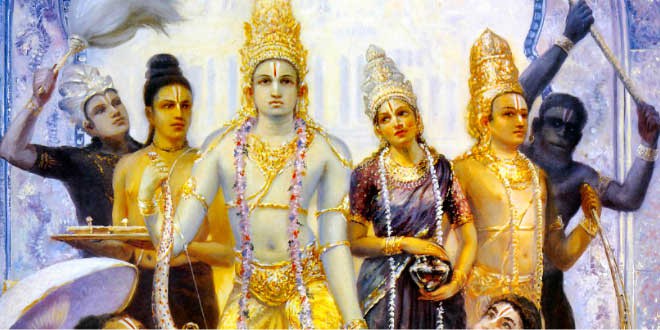
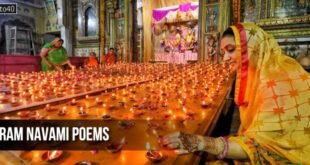
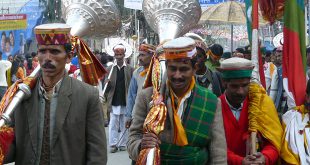
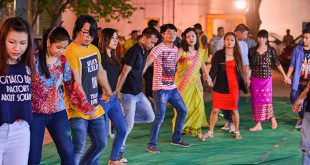



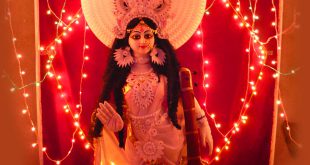
How long is Ram Navami?